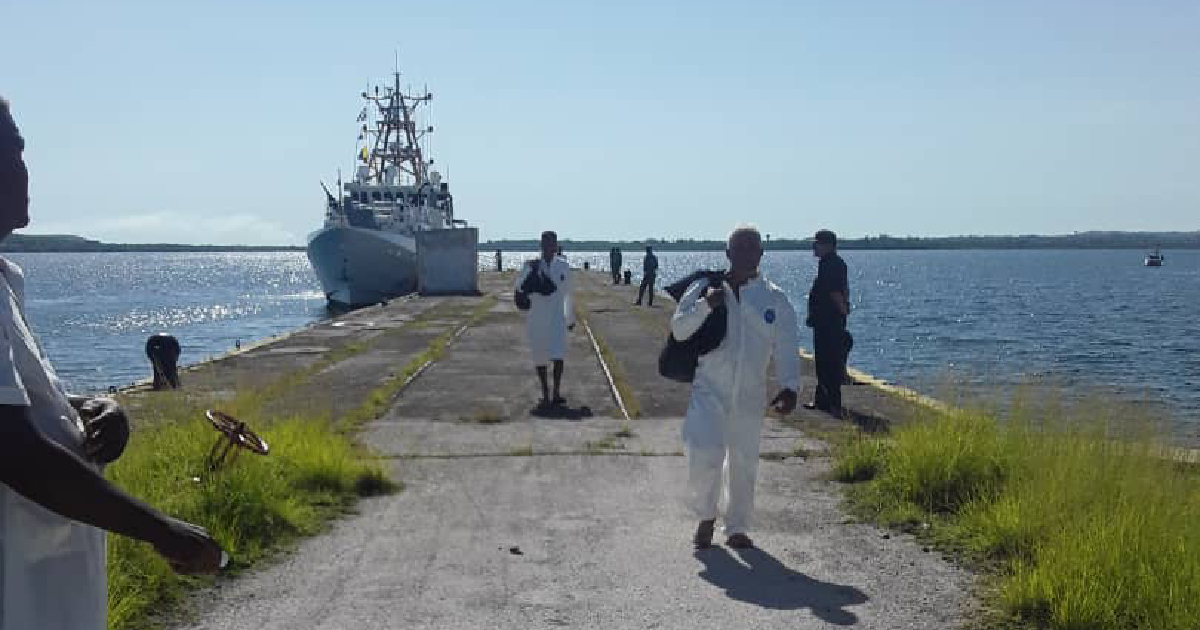Agents from the U.S. Coast Guard (USCG) intercepted 17 Cuban rafters at sea, near the Florida Keys, and returned them to Cuba this Thursday.
In a brief statement on the social media platform X, the USCG reported that the 17 Cubans were intercepted 24 miles south of the Marquesas Keys during "an attempt at illegal maritime migration" detected by an aerial crew from the agency.
The Ministry of the Interior (MININT) of Cuba indicated on the same platform that the group of migrants repatriated on July 25 included 11 men, three women, and three minors—aged seven, 10, and 16—who "had participated in an illegal departure from the country." The Cuban authorities' note did not specify when or from where on the island the rafters had set out, nor did it provide other details.
Ongoing Cuban Migration Crisis
The flow of Cuban migrants to the United States, whether by sea or land, shows no signs of stopping. Just last June, 17,563 Cubans entered through U.S. borders, according to data published by the Customs and Border Protection (CBP). Of that total, 6,216 arrived by sea, confirming the ongoing influx of Cuban rafters to the U.S.
The U.S. government continues to insist that all individuals attempting or arriving illegally by sea will not be allowed to stay in the country. They will be processed in accordance with U.S. laws and policies and returned to their country of origin or departure. Migrants arriving by sea and detained by the Border Patrol upon reaching U.S. soil are processed for return to their home country by the Immigration and Customs Enforcement (ICE) and the Enforcement and Removal Operations (ERO), with a five-year ban on legally re-entering the U.S.
Despite attempts by authorities to deter Cuban rafters, illegal maritime migration remains an option for those desperate to leave the country and having no other means to do so. The ongoing crisis in Cuba continues to drive a massive and irregular exodus from the island to the United States, despite efforts by the Biden administration to channel this flow through legal means such as the humanitarian parole. From January 2023, when this initiative was approved, until the end of June of the current year, 106,757 Cubans benefited from the program.
FAQs about Cuban Migration Crisis
In light of the increasing migration from Cuba to the United States, here are some frequently asked questions and their answers to provide more context and understanding.
Why are so many Cubans attempting to migrate to the U.S.?
Many Cubans are fleeing economic hardship, political repression, and a lack of opportunities in their home country, seeking better living conditions in the United States.
What happens to Cuban migrants intercepted at sea?
Cuban migrants intercepted at sea by the U.S. Coast Guard are typically returned to Cuba. They are processed according to U.S. immigration laws and policies.
How does the U.S. manage illegal maritime migration?
The U.S. Coast Guard and other federal agencies work to intercept migrants at sea and prevent illegal entries. Those who reach U.S. soil are processed by ICE and ERO for return to their home country.
What is the humanitarian parole program?
The humanitarian parole program allows certain eligible individuals to enter the U.S. legally for urgent humanitarian reasons or significant public benefit. Since January 2023, it has benefited over 106,000 Cubans.
